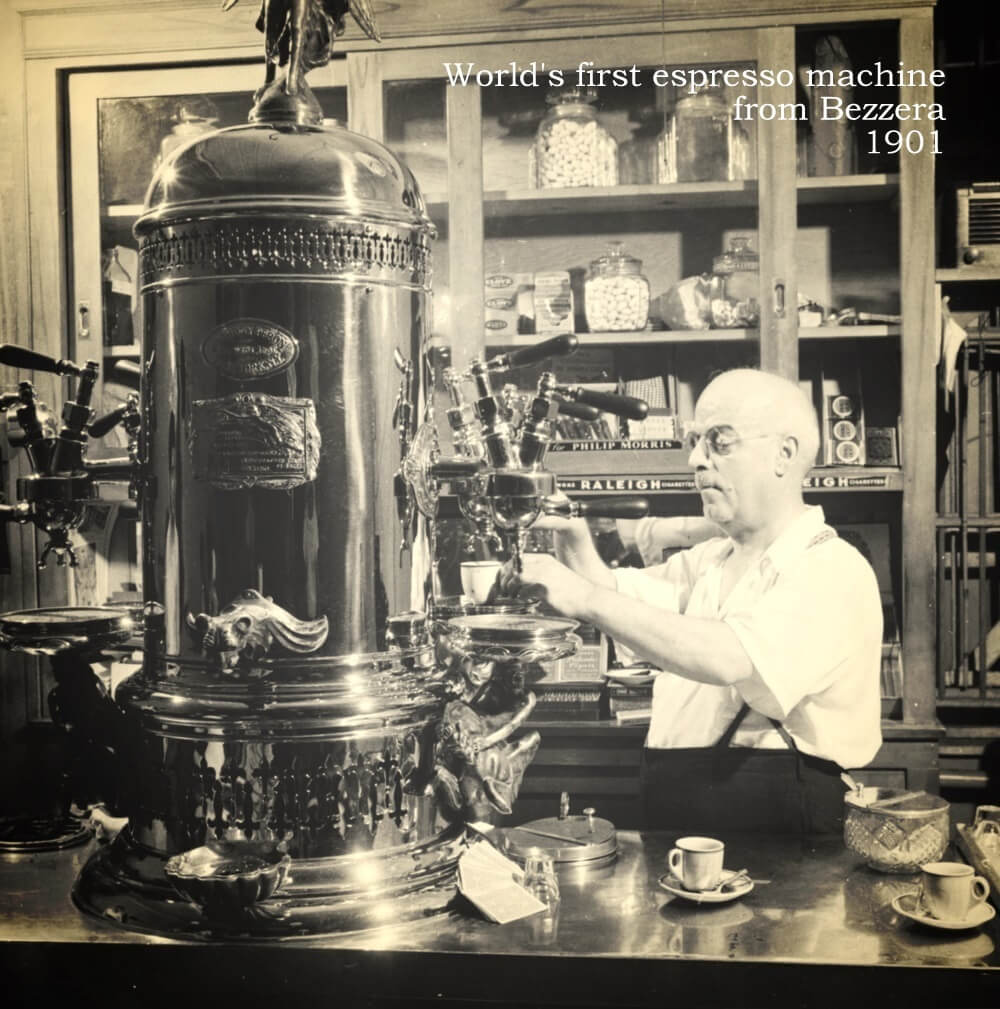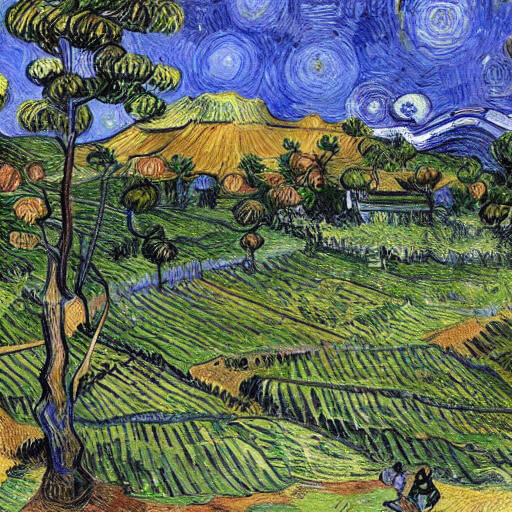[{"id":28500,"link":"https:\/\/www.finecoffeecompany.com\/why-forbes-recognized-italian-coffee-beans-are-transforming-singapores-office-culture\/","name":"why-forbes-recognized-italian-coffee-beans-are-transforming-singapores-office-culture","thumbnail":{"url":"https:\/\/www.finecoffeecompany.com\/wp-content\/uploads\/2024\/01\/Buy-Coffee-Beans-Singapore-Forbest-2024-Arcaffe.webp","alt":"Coffee Beans Singapore"},"title":"Why Forbes-Recognized Italian Coffee Beans Are Transforming Singapore's Office Culture","author":{"name":"Fine Coffee Company","link":"https:\/\/www.finecoffeecompany.com\/author\/fine-coffee-company\/"},"date":"Apr 16, 2025","dateGMT":"2025-04-16 05:42:08","modifiedDate":"2025-04-16 14:14:32","modifiedDateGMT":"2025-04-16 06:14:32","commentCount":"0","commentStatus":"closed","categories":{"coma":"<a href=\"https:\/\/www.finecoffeecompany.com\/category\/latest-updates\/\" rel=\"category tag\">Latest Coffee News and Blog<\/a>","space":"<a href=\"https:\/\/www.finecoffeecompany.com\/category\/latest-updates\/\" rel=\"category tag\">Latest Coffee News and Blog<\/a>"},"taxonomies":{"post_tag":""},"readTime":{"min":8,"sec":29},"status":"publish","excerpt":""},{"id":24937,"link":"https:\/\/www.finecoffeecompany.com\/which-coffee-machine-is-the-best\/","name":"which-coffee-machine-is-the-best","thumbnail":{"url":"https:\/\/www.finecoffeecompany.com\/wp-content\/uploads\/2023\/09\/espresso-machine-coffee-machine-singapore.jpg","alt":"which coffee machine is the best"},"title":"Which Coffee Machine is the Best in 2024?","author":{"name":"Fine Coffee Company","link":"https:\/\/www.finecoffeecompany.com\/author\/fine-coffee-company\/"},"date":"Jan 8, 2024","dateGMT":"2024-01-08 10:09:00","modifiedDate":"2024-01-09 01:45:38","modifiedDateGMT":"2024-01-08 17:45:38","commentCount":"0","commentStatus":"open","categories":{"coma":"<a href=\"https:\/\/www.finecoffeecompany.com\/category\/latest-updates\/\" rel=\"category tag\">Latest Coffee News and Blog<\/a>","space":"<a href=\"https:\/\/www.finecoffeecompany.com\/category\/latest-updates\/\" rel=\"category tag\">Latest Coffee News and Blog<\/a>"},"taxonomies":{"post_tag":""},"readTime":{"min":9,"sec":19},"status":"publish","excerpt":""},{"id":25344,"link":"https:\/\/www.finecoffeecompany.com\/coffee-and-weight-loss\/","name":"coffee-and-weight-loss","thumbnail":{"url":"https:\/\/www.finecoffeecompany.com\/wp-content\/uploads\/2023\/10\/DALL\u00b7E-2023-10-10-11.12.10-Photo-of-a-slender-glass-coffee-cup-with-its-dark-steaming-liquid-inside-placed-on-a-digital-scale-displaying-a-declining-number-symbolizing-weigh.jpg","alt":"coffee and weight loss"},"title":"Coffee and Weight Loss: What the Latest Research Shows","author":{"name":"Fine Coffee Company","link":"https:\/\/www.finecoffeecompany.com\/author\/fine-coffee-company\/"},"date":"Oct 10, 2023","dateGMT":"2023-10-10 03:31:47","modifiedDate":"2023-10-10 11:32:55","modifiedDateGMT":"2023-10-10 03:32:55","commentCount":"0","commentStatus":"open","categories":{"coma":"<a href=\"https:\/\/www.finecoffeecompany.com\/category\/latest-updates\/\" rel=\"category tag\">Latest Coffee News and Blog<\/a>","space":"<a href=\"https:\/\/www.finecoffeecompany.com\/category\/latest-updates\/\" rel=\"category tag\">Latest Coffee News and Blog<\/a>"},"taxonomies":{"post_tag":""},"readTime":{"min":11,"sec":17},"status":"publish","excerpt":""},{"id":25237,"link":"https:\/\/www.finecoffeecompany.com\/washed-coffee-vs-natural-coffee\/","name":"washed-coffee-vs-natural-coffee","thumbnail":{"url":"https:\/\/www.finecoffeecompany.com\/wp-content\/uploads\/2023\/10\/india_balehonnur-2-2048x1536-1.jpg","alt":"Washed Coffee vs Natural Coffee"},"title":"Washed Coffee vs Natural Coffee: Understanding Processing Methods","author":{"name":"Fine Coffee Company","link":"https:\/\/www.finecoffeecompany.com\/author\/fine-coffee-company\/"},"date":"Oct 3, 2023","dateGMT":"2023-10-03 15:35:37","modifiedDate":"2025-04-16 13:48:21","modifiedDateGMT":"2025-04-16 05:48:21","commentCount":"0","commentStatus":"open","categories":{"coma":"<a href=\"https:\/\/www.finecoffeecompany.com\/category\/latest-updates\/\" rel=\"category tag\">Latest Coffee News and Blog<\/a>","space":"<a href=\"https:\/\/www.finecoffeecompany.com\/category\/latest-updates\/\" rel=\"category tag\">Latest Coffee News and Blog<\/a>"},"taxonomies":{"post_tag":""},"readTime":{"min":7,"sec":6},"status":"publish","excerpt":""},{"id":25078,"link":"https:\/\/www.finecoffeecompany.com\/coffee-grounds-in-your-garden\/","name":"coffee-grounds-in-your-garden","thumbnail":{"url":"https:\/\/www.finecoffeecompany.com\/wp-content\/uploads\/2023\/09\/JasperArt_2022-08-28_21.20.44_3.jpg","alt":"Coffee Grounds in Your Garden"},"title":"Everything You Need to Know About Using Coffee Grounds in Your Garden","author":{"name":"Fine Coffee Company","link":"https:\/\/www.finecoffeecompany.com\/author\/fine-coffee-company\/"},"date":"Sep 28, 2023","dateGMT":"2023-09-28 06:44:45","modifiedDate":"2023-09-28 14:48:52","modifiedDateGMT":"2023-09-28 06:48:52","commentCount":"0","commentStatus":"closed","categories":{"coma":"<a href=\"https:\/\/www.finecoffeecompany.com\/category\/latest-updates\/\" rel=\"category tag\">Latest Coffee News and Blog<\/a>","space":"<a href=\"https:\/\/www.finecoffeecompany.com\/category\/latest-updates\/\" rel=\"category tag\">Latest Coffee News and Blog<\/a>"},"taxonomies":{"post_tag":""},"readTime":{"min":4,"sec":5},"status":"publish","excerpt":""},{"id":25000,"link":"https:\/\/www.finecoffeecompany.com\/free-coffee-day\/","name":"free-coffee-day","thumbnail":{"url":"https:\/\/www.finecoffeecompany.com\/wp-content\/uploads\/2022\/02\/espresso-machine-coffee-machine-singapore-2023.jpg","alt":"espresso machine coffee machine singapore 2023"},"title":"Free Coffee Day","author":{"name":"Fine Coffee Company","link":"https:\/\/www.finecoffeecompany.com\/author\/fine-coffee-company\/"},"date":"Sep 25, 2023","dateGMT":"2023-09-25 07:17:09","modifiedDate":"2023-11-18 21:54:55","modifiedDateGMT":"2023-11-18 13:54:55","commentCount":"0","commentStatus":"open","categories":{"coma":"<a href=\"https:\/\/www.finecoffeecompany.com\/category\/latest-updates\/\" rel=\"category tag\">Latest Coffee News and Blog<\/a>","space":"<a href=\"https:\/\/www.finecoffeecompany.com\/category\/latest-updates\/\" rel=\"category tag\">Latest Coffee News and Blog<\/a>"},"taxonomies":{"post_tag":""},"readTime":{"min":2,"sec":3},"status":"publish","excerpt":""},{"id":24721,"link":"https:\/\/www.finecoffeecompany.com\/what-makes-the-perfect-kopi\/","name":"what-makes-the-perfect-kopi","thumbnail":{"url":"https:\/\/www.finecoffeecompany.com\/wp-content\/uploads\/2023\/09\/Singapore-traditional-kopi.jpg","alt":"Singapore traditional perfect kopi"},"title":"Decoding Singapore's Coffee Culture: What Makes the Perfect Kopi?","author":{"name":"Fine Coffee Company","link":"https:\/\/www.finecoffeecompany.com\/author\/fine-coffee-company\/"},"date":"Sep 13, 2023","dateGMT":"2023-09-13 04:48:45","modifiedDate":"2023-09-14 09:22:56","modifiedDateGMT":"2023-09-14 01:22:56","commentCount":"0","commentStatus":"open","categories":{"coma":"<a href=\"https:\/\/www.finecoffeecompany.com\/category\/latest-updates\/\" rel=\"category tag\">Latest Coffee News and Blog<\/a>","space":"<a href=\"https:\/\/www.finecoffeecompany.com\/category\/latest-updates\/\" rel=\"category tag\">Latest Coffee News and Blog<\/a>"},"taxonomies":{"post_tag":""},"readTime":{"min":3,"sec":44},"status":"publish","excerpt":""},{"id":22947,"link":"https:\/\/www.finecoffeecompany.com\/how-long-can-coffee-last\/","name":"how-long-can-coffee-last","thumbnail":{"url":"https:\/\/www.finecoffeecompany.com\/wp-content\/uploads\/2023\/06\/Testing-a-coffee-roasted-two-years-ago.jpg","alt":"How long can coffee last"},"title":"How long can coffee last?","author":{"name":"Fine Coffee Company","link":"https:\/\/www.finecoffeecompany.com\/author\/fine-coffee-company\/"},"date":"Jun 26, 2023","dateGMT":"2023-06-26 08:56:41","modifiedDate":"2023-06-26 17:08:08","modifiedDateGMT":"2023-06-26 09:08:08","commentCount":"0","commentStatus":"closed","categories":{"coma":"<a href=\"https:\/\/www.finecoffeecompany.com\/category\/latest-updates\/\" rel=\"category tag\">Latest Coffee News and Blog<\/a>","space":"<a href=\"https:\/\/www.finecoffeecompany.com\/category\/latest-updates\/\" rel=\"category tag\">Latest Coffee News and Blog<\/a>"},"taxonomies":{"post_tag":""},"readTime":{"min":2,"sec":58},"status":"publish","excerpt":"What happens if you extract a coffee roasted from 2 years ago?"},{"id":22881,"link":"https:\/\/www.finecoffeecompany.com\/inflation-special-deal\/","name":"inflation-special-deal","thumbnail":{"url":"https:\/\/www.finecoffeecompany.com\/wp-content\/uploads\/2023\/01\/pexels-cottonbro-studio-6531723.jpg","alt":"Inflation Special Deal"},"title":"Restaurant, Cafe and Office Inflation Special Deal","author":{"name":"Fine Coffee Company","link":"https:\/\/www.finecoffeecompany.com\/author\/fine-coffee-company\/"},"date":"Jun 23, 2023","dateGMT":"2023-06-23 15:03:04","modifiedDate":"2023-06-26 20:29:58","modifiedDateGMT":"2023-06-26 12:29:58","commentCount":"0","commentStatus":"closed","categories":{"coma":"<a href=\"https:\/\/www.finecoffeecompany.com\/category\/latest-updates\/\" rel=\"category tag\">Latest Coffee News and Blog<\/a>","space":"<a href=\"https:\/\/www.finecoffeecompany.com\/category\/latest-updates\/\" rel=\"category tag\">Latest Coffee News and Blog<\/a>"},"taxonomies":{"post_tag":""},"readTime":{"min":3,"sec":53},"status":"publish","excerpt":"As inflation increase and the powering power of consumers gets lower, many of us are all in hard times together. We think it's good if we can help those who might need a hand."},{"id":20498,"link":"https:\/\/www.finecoffeecompany.com\/coffee-consumption-and-its-impact-on-kidney\/","name":"coffee-consumption-and-its-impact-on-kidney","thumbnail":{"url":"https:\/\/www.finecoffeecompany.com\/wp-content\/uploads\/2023\/03\/pexels-mart-production-7330130.jpg","alt":"Coffee Consumption and its Impact on Kidney"},"title":"Coffee Consumption and its Impact on Kidney Disease: A Meta-Analysis","author":{"name":"Fine Coffee Company","link":"https:\/\/www.finecoffeecompany.com\/author\/fine-coffee-company\/"},"date":"Mar 28, 2023","dateGMT":"2023-03-27 16:00:28","modifiedDate":"2023-03-28 00:00:35","modifiedDateGMT":"2023-03-27 16:00:35","commentCount":"0","commentStatus":"closed","categories":{"coma":"<a href=\"https:\/\/www.finecoffeecompany.com\/category\/latest-updates\/\" rel=\"category tag\">Latest Coffee News and Blog<\/a>","space":"<a href=\"https:\/\/www.finecoffeecompany.com\/category\/latest-updates\/\" rel=\"category tag\">Latest Coffee News and Blog<\/a>"},"taxonomies":{"post_tag":""},"readTime":{"min":3,"sec":6},"status":"publish","excerpt":""},{"id":20278,"link":"https:\/\/www.finecoffeecompany.com\/how-to-make-a-kopi-that-tastes-much-better-with-an-espresso-machine\/","name":"how-to-make-a-kopi-that-tastes-much-better-with-an-espresso-machine","thumbnail":{"url":"https:\/\/www.finecoffeecompany.com\/wp-content\/uploads\/2023\/02\/Singapore-Fine-Coffees-Kopi-Coffee-Crema.jpg","alt":"How to make a Kopi Better. Kopi Crema"},"title":"How to make a Kopi that tastes much better with an espresso machine? Introducing Kopi Crema","author":{"name":"Fine Coffee Company","link":"https:\/\/www.finecoffeecompany.com\/author\/fine-coffee-company\/"},"date":"Mar 2, 2023","dateGMT":"2023-03-02 05:13:12","modifiedDate":"2023-10-19 21:48:25","modifiedDateGMT":"2023-10-19 13:48:25","commentCount":"0","commentStatus":"closed","categories":{"coma":"<a href=\"https:\/\/www.finecoffeecompany.com\/category\/latest-updates\/\" rel=\"category tag\">Latest Coffee News and Blog<\/a>","space":"<a href=\"https:\/\/www.finecoffeecompany.com\/category\/latest-updates\/\" rel=\"category tag\">Latest Coffee News and Blog<\/a>"},"taxonomies":{"post_tag":""},"readTime":{"min":21,"sec":48},"status":"publish","excerpt":"One question that our coffee specialists always get asked is, \"Is there a way to improve Kopi?\n\nOr visitors who came to our experimental room questioned, \"How to make a Kopi with an espresso machine?\" \n\nOne question that our coffee specialists always get asked is, \"Is there a way to improve Kopi?\n\nOr visitors who came to our experimental room questioned, \"How to make a Kopi with an espresso machine?\" \n\nWhen you have a coffee specialist and someone from Singapore, we had the same questions and had done the research before. Introducing Kopi Crema!"},{"id":19897,"link":"https:\/\/www.finecoffeecompany.com\/does-descaling-espresso-machines-work\/","name":"does-descaling-espresso-machines-work","thumbnail":{"url":"https:\/\/www.finecoffeecompany.com\/wp-content\/uploads\/2023\/02\/espresso-machine-descaling-problems.jpg","alt":"Descaling espresso machines"},"title":"Does descaling espresso machines work","author":{"name":"Fine Coffee Company","link":"https:\/\/www.finecoffeecompany.com\/author\/fine-coffee-company\/"},"date":"Feb 14, 2023","dateGMT":"2023-02-14 03:43:23","modifiedDate":"2023-12-30 15:06:17","modifiedDateGMT":"2023-12-30 07:06:17","commentCount":"0","commentStatus":"closed","categories":{"coma":"<a href=\"https:\/\/www.finecoffeecompany.com\/category\/latest-updates\/\" rel=\"category tag\">Latest Coffee News and Blog<\/a>","space":"<a href=\"https:\/\/www.finecoffeecompany.com\/category\/latest-updates\/\" rel=\"category tag\">Latest Coffee News and Blog<\/a>"},"taxonomies":{"post_tag":""},"readTime":{"min":8,"sec":18},"status":"publish","excerpt":"Limescale build-up is one of the worst things to happen to any coffee machine, much worst than a dirty machine. They form solid obstructions from the inside and can cause severe damage when the sensors are hindered. What can be done?"}]


